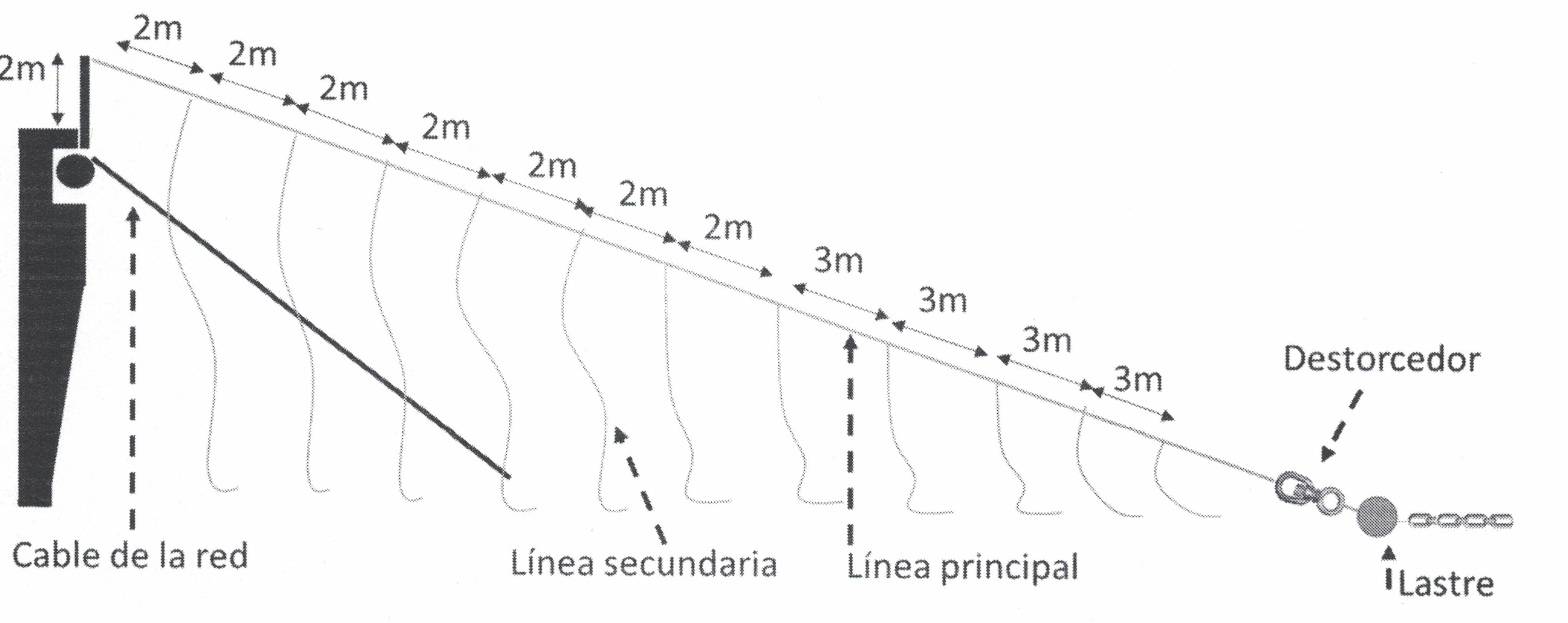Bird-scaring line design for Uruguayan trawlers, from Resolution No. 040/2020
Marcel Calvar of the Uruguayan National Directorate of the Environment (Dirección Nacional de Medio Ambiente, Ministerio de Vivienda, Ordenamiento Territorial y Medio Ambiente) - and ACAP National Contact Point - has recently informed ACAP of a new resolution aimed at reducing the mortality of seabirds in trawl fisheries in his country. Resolution No. 040/2020 of the National Directorate of Aquatic Resources (Dirección Nacional de Recursos Acuáticos, Ministerio de Ganadería, Agricultura y Pesca) of 27 February 2020 requires “Fishing vessels belonging to “Category A” (operating outside the Río de la Plata in the Argentine-Uruguayan Common Fisheries Zone, aimed at catching hake Merluccius sp. and its accompanying fauna by bottom trawls with gates) must deploy two bird-scaring lines either side of the net cables or warps to prevent seabirds contacting the fishing gear.” Marcel adds that the measure has been taken in view of the poor global conservation status of several species of seabirds, including albatrosses and other seabirds belonging to the order Procellariiformes.

A Uruguayan bird-scaring line attempts to keep Black-browed Albatrosses away from the trawl cables
Technical specifications for the bird-scaring lines, along with recommendations on their use and construction, are included in an Annex to the Resolution. The lines must be deployed from the trawler’s stern with a minimum length of 30 m and at least two metres either side of the trawl cables. The attached streamers must be long enough to reach the sea surface under calm conditions, be constructed of irrigation hose and spaced at intervals of two to three metres. A buoy is to be attached to the end of the bird-scaring line to keep tension when in use.
The Resolution also requires trawlers to carry spare lines in good condition, with enough material on board for their maintenance. Further, fishing vessels may not use network sonar cables – a known source of seabird mortality. The Resolution will take effect from 01 June 2020.
With thanks to Marcel Calvar.
John Cooper, ACAP Information Officer, 16 March 2020

 English
English  Français
Français  Español
Español 